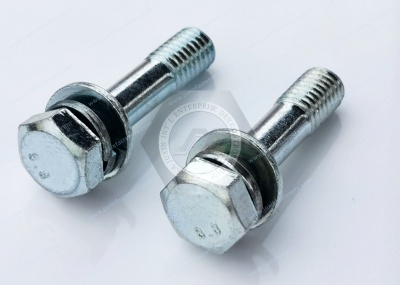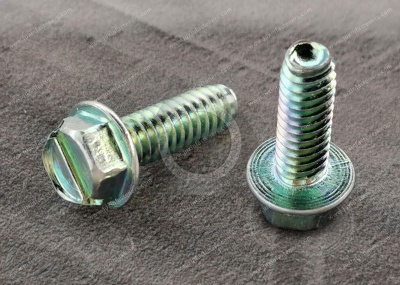Call Us
+86 136 6007 9809
Call Us
+86 136 6007 9809
Jun. 27, 2024
Difference between hexagon head bolts and hexagon flange face bolts
Hexagon bolts are fasteners consisting of a head and a screw. The bolts are divided into iron and stainless steel bolts according to their material, i.e., hexagon head bolts (partially threaded)-Grade C and hexagon head bolts (fully threaded)- Grade C.
Hexagonal flange face bolts connect two flanges. They are usually composed of three parts: a hexagonal head, a threaded rod body, and a flange face. They are tightly coupled to the flange and are used to fix the connecting parts of mechanical equipment.
The difference in appearance between hexagon head bolts and hexagon flange bolts
Hexagon head bolts are a kind of bolt head with six corners, usually used to connect machines, equipment, and structures. Their appearance is characterized by a clear hexagonal head, usually with thread and partial thread, which are two kinds and are suitable for different use scenarios.
Hexagonal flange bolts are bolts with a hexagonal head and a flange, which is the flat surface underneath the head of the bolt that is used to withstand pressure when connecting it to another component. Due to the flange face, this type of bolt is more suitable for use in high-temperature and high-pressure situations where sealing is required. Characteristics of hexagonal flange face bolts:
1. Simple structure: The structure of hexagonal flange face bolts is relatively simple, easy to process and manufacture, and also easier to maintain and replace.
2. Stability: The bolt's interface joints are more stable, can withstand greater external vibration, and have a longer service life.
3. Easy to install: hexagonal flange bolts with a hexagonal head and body threaded structure are easy to fix to the connecting parts using pliers or wrenches.
4. Wide application: Hexagonal flange bolts are suitable for connecting flanges in various mechanical equipment, such as some vehicles and large mechanical equipment, and are widely used in multiple fields.
Hexagon head bolts and hexagonal flange face bolts use the difference
Hexagon head bolts are mainly used to connect two structural parts, such as mechanical equipment, steel structures, rail transportation, etc. Compared with other bolts, they are easier to replace and torque and have good anti-vibration and tensile properties.
On the other hand, hexagonal flange face bolts are widely used in applications that require high sealing, such as oil fields, ships, and natural gas pipeline construction. Their flange design can prevent leakage during solid vibration, high temperature, and pressure.
Difference in material between hexagon head bolts and hexagon flange bolts
The material of hexagon head bolts and hexagon flange bolts depends on their use and the structure to which they are connected. Commonly used materials include carbon steel, stainless steel, and aluminum alloy. For high-temperature and corrosive environments, such as oceans and other occasions, it is necessary to use alloy materials with higher strength and better corrosion resistance.
For high-quality Carbon Steel Hexagonal Head Screws and professional technical support, don't hesitate to contact us at adelajonly@gmail.com or visit our website at: https://www.juxinfasteners.com.


Correct selection of suitable bolts
In choosing hexagonal head bolts or hexagonal flange face bolts, one needs to consider the connection structure and the characteristics of the scene used. Choose hexagonal flange face bolts if you need high sealing and anti-leakage properties. On the other hand, hexagonal head bolts are more suitable for connecting structural parts or for scenarios requiring frequent replacement of easy-to-use parts.
In addition, when choosing bolts, one should also pay attention to the matching nut, washer, preload, and other factors to ensure the health and safety of the connection.
Precautions for the use of hexagonal flange bolts
1. Select the appropriate size: the length and diameter of hexagonal flange bolts should be selected according to the size of the actual connection part and should not be too long or too short.
2. Ensure uniform pressure: When tightening the hexagonal flange bolts, ensure uniform pressure and avoid over-tightening or loosening.
3. Prevent over-tightening: Hexagonal flange bolts should be moderately tightened, not over-tightened, otherwise it may cause damage to the connection part or fall off.
[Conclusion
In Conclusion, although heConclusionad bConclusionexagonal flange face bolts have hexagonal heads, their uses and characteristics differ. Correctly selecting the applicable bolts can improve the connection's reliability, durability, and safety and safeguard the integrity and stability of the structural body.
Contact Us
Tel.:
+86 020 8621 0320
+86 020 3121 6067
Technical Support:
Navigation
SEND INQUIREY